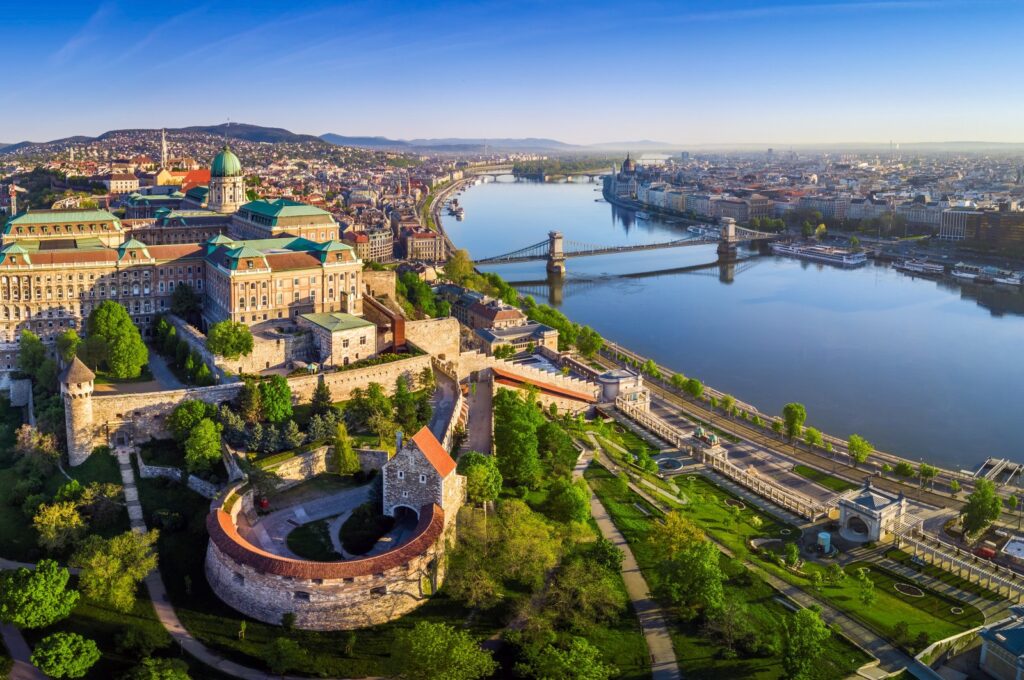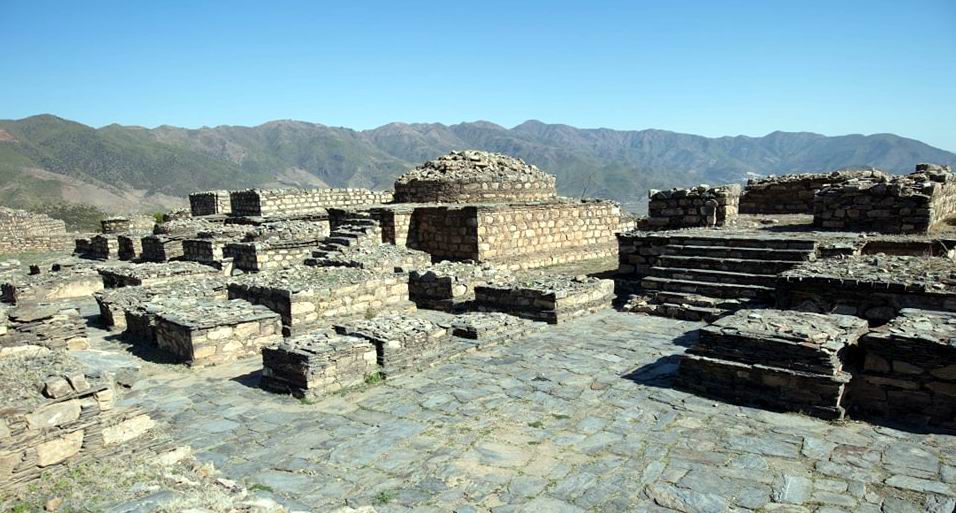
Joe Henley
In March 1992, Chou Yeh-Cheng was high up on the slopes of Mount Dabajian in Taiwan’s Shei-Pa National Park. The 3,500m peak, mostly made up of dark, earthy sandstone, is noted for its imposing vertical rock face. It was the first mountain ascent Chou had ever attempted.
“The temperature was below zero and I didn’t have enough clothes,” he recalled. “I was with my two younger brothers, and we found a shelter. It was made from wood, so we took down the wood from the wall and made a fire to survive.”
Chou was beginning to display symptoms of hypothermia and he says the fire likely saved his life. Yet, the blaze presented a danger in itself. Having lit the fire indoors, Chou and his brother nearly choked to death on the smoke.
“After that,” Chou said, “I realised I should take mountain climbing seriously.”

Chou’s first mountain ascent was up Taiwan’s daunting Mount Dabajian (Credit: CJFAN/Getty Images)
Today, Chou is affectionately known as the “Old Mountain Monkey” among Taiwanese hikers, and he has hiked Taiwan’s 100 3,000m-plus peaks a record 16 times each. He also holds the record for traversing those 100 peaks in the fastest time. But personal feats aside, by spreading his love of hiking and educating countless others about Taiwan’s natural beauty, Chou has single-handedly changed the island’s hiking culture.
At 70, Chou still cuts an unimposing figure: slight with bright, inquisitive eyes – a touch of mischief in their easy glint – with a wispy salt-and-pepper goatee. Even with a knee injury (the first physical ailment he claims he’s ever encountered), he still walks around 20km a day.
Until the 1990s, hiking in Taiwan was a fringe sport, as many mountains were off-limits during the country’s period of martial law
From 1995 until March 2021, Chou spent 100 days per year hiking the two mountain ranges running along Taiwan’s spine and eastern coast. In addition to his own excursions, he also led group hikes up and down the island’s 100 peaks from Hsinchu County in the north to Pingtung in the south, and extending to Hualien, Yilan and Taitung on Taiwan’s eastern end.
“I take every climber as a friend or relative,” he said. “I like to help others, and I believe helping others achieve the ‘100 Peaks’ is a part of my responsibility.”

Chou has climbed each of Taiwan’s 100 3,000m peaks 16 times (Credit: Chou Yeh-Cheng)
Part of Chou’s mission has been to promote Taiwan as a premier hiking destination – and that starts by instilling a love of the mountains in locals. To get first-timers hooked on hiking, his go-to trail is the six-day Nenggao-Andongjun hike, which rises high above the tree line, tracing Taiwan’s spine and crossing deep valleys and vast, dreamlike meadows of dwarf bamboo.
“It has grass and lakes in the high mountain area, and many deer around you when you camp at night,” said Chou. “It looks very beautiful.”
Chou came to hiking rather late in life. As a young man, he pushed himself to be the best at whatever he did but struggled to find an outlet outside of his electronics marketing job. For years he walked a conventional path – marriage, job, family. Still, he longed for something more.
Until the 1990s, Chou said hiking in Taiwan was seen as more of a fringe sport, since large swaths of the mountains were off-limits during the country’s 38-year-period of martial law, which ended in 1987. As the island embraced democracy in the 1990s, the mountains were opened to the public and hiking became more widespread. After spending much of his vacation time and weekends hiking in the mid-’90s, Chou retired in 1999. He saw an opportunity to get more people involved in the sport he had fallen in love with, so he became a full-time mountain guide, working for the Linkou Mountain Climbing Association and establishing trails up and down the island.

Thanks to Chou’s efforts, the Taiwanese government began budgeting $2m per year to maintaining trails in Taipei (Credit: Chun-Che Tseng/EyeEm/Getty Images)
Chou’s practical knowledge and unmatched awareness of the mountain terrain soon made him a sought-after guide. The Taiwanese government even began to take notice of the sport’s increased popularity, thanks in no small part to Chou’s efforts. In 2005, then-president Chen Shui-bian summoned Chou for a meeting, and Chou handed the leader a proposal to improve the state of hiking in Taiwan. Soon after, Taipei City started promoting hiking trails within its city limits, budgeting approximately US$2m per year to maintaining trails and linking existing trails into loops – one of which would come to be known as the Taipei Grand Trail, a 92km route stretching from Yangmingshan in the north of the city to the district of Muzha in the south.
In 2011, Chou’s climbing reached its crescendo when he attempted to break the record for ascending all 100 of Taiwan’s 3,000m-plus peaks in the shortest amount of time. It took the previous record-holder six months to ascend all 100 peaks, and he did so with a guide and crew who helped carry supplies up and down, day after day, in 24 separate trips. Chou thought he could do it in just eight trips, and if everything went according to plan, he could finish all 100 ascents and descents in less than three months.
“We only had four people [and] 20-30kg packs,” Chou recalled. “No matter if there was rain, typhoon or earthquake, we had to go.” In the end, Chou and three others who made the attempt were able to ascend the 100 peaks in just 87 days, obliterating the previous record. The accomplishment itself isn’t what Chou recalls most fondly, but what they were able to do for others along the way.
“The most meaningful thing is that we tied lots of markers on the trail to help people find their way. In the mountains, once you get lost, you’re in trouble,” he said.
In addition to working diligently to change hiking culture in Taiwan, Chou has also been working to make the sport safer. Taiwan’s landscape is altered every year by typhoons, and Chou has often mapped out new routes to bypass those washed out by landslides while teaching hikers traditional navigation skills so that they don’t rely too heavily on smartphones and other technology, which could always fail.

Taiwan is setting up federally funded hiking education centres across the country (Credit: Chou Yeh-Cheng)
Thanks in part to Chou’s decades-long efforts, the Taiwanese government declared 2020 the “Taiwan year of mountain tourism“, and promoted a series of specially designed trail routes highlighting the island’s ecological and cultural diversity, as well as historical paths such as the Danlan Old Trail – considered “Taiwan’s oldest road” – that once connected Taipei and Yilan during the Qing Dynasty.
But then Covid struck.
Now, Taiwan is in the process of setting up federally funded hiking education centres, where guides can receive safety training and the knowledge Chou has been imparting for decades will be passed onto hikers who wish to experience the splendour of Taiwan’s high peaks.
Many Taiwanese have grown close to Chou after being introduced to hiking and going on guided trips around the island with him. Some have even been inspired to complete the 100 peaks themselves.
Judy Ho of Danshui, New Taipei City, had climbed just eight of the 100 peaks before signing up for a hike with Chou. She had often seen pictures of Jiaming Lake, the largest high-altitude body of water on the island, with its famed mirror-like surface beautifully reflecting the sky and the surrounding vista, and dreamed of making the journey to see it in person. To get there meant, three days in, three days out, covering an average of 20km per day over rugged terrain.
“We walked from dawn to dusk. The weather refused to cooperate, dumping rain on the group for the first two days, and snow for the third,” recalled Ho. “I was exhausted, but I felt so happy.” With Chou’s guidance, Ho was able to see the lake she dreamt of seeing and experience a new side of her island. “He’s teaching others the skills during the trip,” she went on, explaining how Chou passed on his encyclopaedic knowledge of local plant and animal life onto her.

Reaching Jiaming Lake’s mirror-like surface requires a multi-day hike in southern Taiwan (Credit CJFAN/Getty Images)
Chou wants his hikers to walk away with more than just a feeling of accomplishment for arriving at a destination. They call him “teacher” out of respect, and he calls them “students”. He teaches them how to survive hypothermia on the high peaks and points out wildlife many Taiwanese have only seen on nature programmes, pausing when he hears the sound of a muntjac deer or the chattering of macaque monkeys in the forest canopy. Chou describes how broadleaf elephant ear ferns can be folded into water carriers or used as a natural umbrella in the pouring rain, and talks of how to identify various snake species and what to do if one suffers a potentially fatal bite.
Due to the knee injury he is still recovering from, Chou is no longer leading tours into the mountains these days. Instead, he has devoted himself to an entirely new pursuit: walking around Taiwan – a journey known locally as the Huan Dao, or “round the island”.
Since March, he has circumnavigated the island two and a half times, sometimes alone and occasionally joined by friends, both old and new. All told, including his journeys up and down Taiwan’s various peaks, Chou says he’s walked more than 10,000km in Taiwan.
Just as he has sought out new paths in the mountains, Chou has also added new routes on his Huan Dao sojourns, mapping out what he calls a “spiderweb” path, with offshoots on lesser-known rural mountain trails that he hopes others will take the time to traverse and appreciate once he publishes them.

Chou says he’s walked more than 10,000km in Taiwan (Credit: toonman/Getty Images)
Chou has not abandoned the mountains entirely, though. He still feels their call and hopes that others will discover them as a place of unequalled beauty and serenity as he did. Looking back on that first trip to Dabajian nearly three decades ago, it wasn’t the near-death experience that dominates his thoughts, but instead what he discovered.
“I had heard people call Taiwan ‘Formosa’ (the beautiful island),” said Chou, “but only [after hiking up into the mountains] did I understand why. I understood the beauty of Taiwan.”
Courtesy: BBC
The post Can Taiwan become Asia’s next great hiking destination? appeared first on The Frontier Post.








